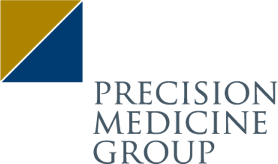Don’t rely on generic assumptions about generic competition
by Doug Ranahan
Launching a branded product into a market that includes generic competitors poses unique challenges for launch leaders. Fortunately, when you find yourself in this kind of situation today, AI-driven data and insights can help you better understand your market access risk.
In this piece, you will discover what that looks like in practice when you’re taking on generics, utilizing an approach you can apply to any launch scenario.
As you are likely familiar, launch leaders have traditionally had to build launch and payer contracting strategies on shaky foundations of rules of thumb and past experience, but an overreliance on this kind of information creates vulnerabilities. It accounts for everything the leader and their team do know (or assume to know), but brings to light no new information.
As a result, a launch leader can inadvertently under- or overestimate the importance of one or two attributes of their product. For example, they might assume their product’s order of entry into the market is more or less important than it truly is. So when they go to build a launch plan based on that assumption, they bake in blind spots — and risk.
Today, AI can deepen the understanding beyond what one person or launch team could ever generate on their own. Even better, when you innovate how you launch based on AI-driven data analyses, you can see more clearly why your brand will likely have market access advantages in some scenarios and disadvantages in others.
The FAST solution from PRECISIONxtract puts AI capabilities and life sciences data in the hands of experienced data scientists, which makes it possible to more accurately calculate risks and plan accordingly.
To illustrate the value of using AI-driven data, FAST data scientists ran two experiments. Each experiment involves a hypothetical drug put into the context of actual FDA-approved-drug data. The resulting scores represent the hypothetical product’s market access risk if it were actually launched into a market with generic competition. To keep things simple, we looked at how just one factor, innovation, plays a role in determining where branded products land on the market access pendulum when generics are present. (In an actual FAST consulting engagement, we combine 50+ attributes to develop the most accurate conclusions available.)
NOTE: Markets can change fast, so data must be timely in order to give you an accurate representation of access expectations. For this exercise, we used FAST data from March 2021.
Experiment 1: How an asthma drug’s innovation level impacts market access
The Scenario:
Let’s say you have an asthma product launching into a market where there is moderate to high generic competition.
Assumptions:
Your own experience tells you payers may restrict access to your product in order to drive generic utilization. And rules of thumb around the asthma market might tell you to focus on your more convenient dosing and positive clinical outcomes as an indication of your product’s innovation. But that knowledge takes you only so far and may not influence the payers’ coverage decision.
Tests:
To go further and do more to influence payers, you can consider other attributes of your product, just one of which is whether it is truly innovative. Our FAST data scientists refer to a product as “innovative” if it is the first of a new mechanism of action (MoA) to be launched in treating a disease. Using this definition of innovation, you can see things more clearly.
In our first experiment to see how innovation differences would affect the asthma drug’s market access position, we tested two scenarios. In the first scenario, our hypothetical brand was innovative. In the second, it wasn’t innovative. All other factors were held constant.
Results:
What we found is that an innovative launch would have a commercial predicted access score at a maximum of 80 on FAST’s 100-point scale, whereas a non-innovative launch would have a max score of 50, which is the average overall market access score. For context, a FAST predicted access score in the 80s indicates few restrictions, whereas a score of 50 could be subject to greater restrictions.
With that more detailed knowledge, as a launch leader, you would be able to focus on the MoA and how that is a differentiator for your product to strengthen your launch plan, as opposed to cost or another attribute. Without that knowledge, you risk payers placing your product in a disadvantaged formulary position because of a weak payer contracting strategy.
Now let’s look at another example.
Experiment 2: With bipolar disorder, commercial payers and Medicare diverge
The Scenario:
This time around, let’s hypothesize you have a bipolar disorder drug launching into a market with generic competitors.
Assumptions:
Your prior launch experience may support expectations of innovation as being a key to successful payer coverage, but what if the reality is more nuanced? Is there another layer below where innovation can become a hindrance?
Tests:
To move this imaginary launch beyond educated guesses and past experience, we ran two more tests using actual life sciences data: one for commercial payers and another for Medicare. Again, we adjusted whether the drug was innovative and left all other factors the same.
Results:
For a bipolar disorder medication launching into a market where there is moderate to high generic competition, innovation had an impact that was similar to that of the asthma medication on the predicted access score for commercial payers. An innovative launch had a commercial predicted access score at the max of 81, and a non-innovative launch had a score of 52.
This seems to suggest that the 80/50 split could be a somewhat universal estimate — but then we uncovered a catch.
The interesting story with our bipolar test is that for Medicare, the opposite was true. For Medicare, the predicted market access score for our branded drug was lower overall. And when we looked at how the drug performed as an innovative product launch, it was near the bottom of the 0-100 scale.
This finding highlights the wariness of Medicare decision makers when it comes to novel therapy launches in a saturated market. Running the numbers illuminated a breach in our assumptions around innovation.
Key takeaways
So what can you take away by comparing the predicted market access scores of mock drugs in different therapeutic areas? We can draw a few conclusions that are perhaps the most important part of this exercise:
1. Just one attribute can drastically change a drug’s predicted market access position
In these two hypothetical tests, we concentrated on innovation in the context of generic competition. We didn’t consider other attributes such as order of entry, treatment type, differential dosing ability and others. And you can see how just one attribute can change the game. When you combine more robust data to factor in additional qualities, you gain a much more accurate prediction of market access risk.
Placing too much emphasis on one attribute can lead you devalue one other critical factor or combination of factors that will impact your market access.
2. Even when a market access risk level seems similar, payer type can change everything
Our two tests showed that just because a payer type would respond to a product in one way, we can presume another payer will do the same. When your product is entering a market with generics, and it’s likely at a disadvantage in some ways, knowing what motivates different payers gives you an advantage.
Run multiple tests using various scenarios to really understand your product’s predicted market access across the entire landscape.
3. Launching with FAST means you don’t have to rely on assumptions
From these two experiments, we also learned how relying too much on what you already know, without looking at the universe of factors impacting payer coverage decisions, leads to blind spots in a payer contracting strategy. The attributes we crunched and insights we found in the examples are the tip of the iceberg to conclusions you can get using FAST’s neural network.
When you launch into a market with generic competition, pricing will always be a barrier. However, even though a product may have a steeper price, other factors influence payer decision making. The pharma market is increasingly dynamic. It can be easy to miss something meaningful that impacts how payers evaluate your product if you’re relying mostly on past cases and experience.
Before your next launch, be sure you know which factors are most likely to motivate your target payers.

Using FAST allows you to identify key drivers of payer decision making and your overall predicted risk at the channel level.
PRECISIONxtract provides a strategic consulting engagement leveraging FAST for your pre-launch product assessment, as well as opportunities to license the tool itself for ongoing analytics.


